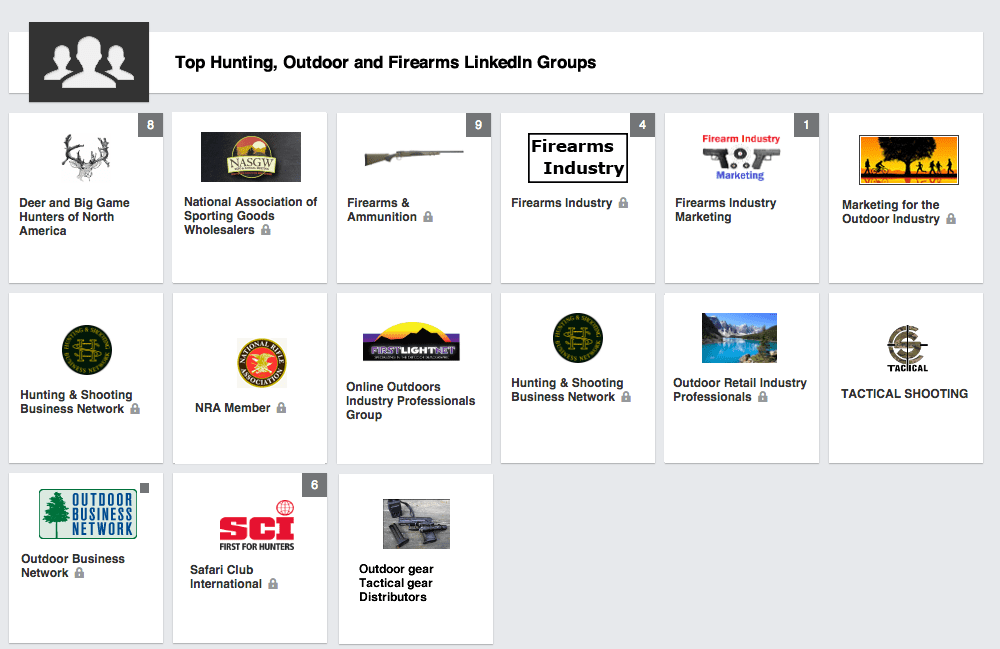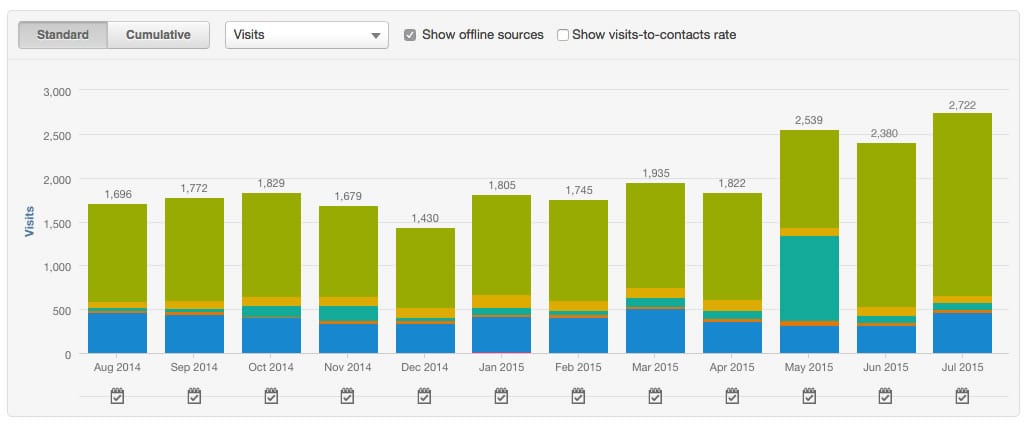
I am often asked by frustrated manufacturers in the hunting, outdoor and firearms industry about how inbound marketing can specifically help their business increase sales over their entire chain of distribution.
They are frustrated because many have bought email lists thinking they could send their offers to interested distributors or customers, redesigned their website that cost thousands of dollars only to get zero increase in traffic, hired an SEO firm to boost traffic or even spent money on a trade show sponsorship that brought little to no results. And cold calling doesn’t seem to work as well as it used to.
Some have been left feeling burnt with little or nowhere else to turn except to some other web or PR firm making big promises.
In this post, I want to look at three components of the distribution chain: the distributor, the dealer and direct-to-consumer and give you three bottom line takeaways on how inbound marketing is different from traditional methods you might have used in the past and how specifically inbound marketing can help your business’ bottom line.
So let’s go…
First, let’s start with the distributor
Distributors are always on the look out for the next hot product. They want to know if your brand’s product can get a good margin, sell quickly and most importantly, know if their investment in your product will pay off. (Source: Entrepreneur)
To attract more distributors, you can utilize the inbound marketing methodology to create content to establish your brand which in turn, creates “thought leadership.” Nobody knows more about how your product helps customers than you. By publishing your content on B2B networks like LinkedIn, where distributors are looking for new products and ideas—you can really stand out among your competitors.

Top hunting, outdoor and firearms LinkedIn groups
There are several active groups on LinkedIn you should join.
By creating and sharing helpful information and answering questions about your product, you begin to build brand awareness and trust within your network. Trust is a large consideration when creating a partnership with a distributor. Buyers go through about 57% of the purchasing process before ever talking to sales. (Source: CEB) This means that helpful content has the potential to create trust with your potential distributor before you even talk. This makes the selling process much easier and more likely to end in a purchase order.
Example Questions Your Inbound Marketing Should Address
-
How much profit can we make when selling your products? (Address this on both a per-unit level and an expected total sales level.)
-
How does your product compare financially to other similar products? What are the profit levels you can bring compared to someone else’s product?
-
Does your company provide additional marketing funds to help sell these products? What exactly do you do to help them sell?
-
Is there a demand for your product? What need does it serve, and which retail market is most likely to be effective when selling it?
-
Do you produce a variety of different products that can also easily be distributed?
(Source: Iqnection)

Inbound marketing tracking sources report
Since inbound marketing is internet-based, it’s also trackable. Imagine knowing exactly how your marketing has affected your bottom line and being able to show a prospective distributor real results. This can be very powerful especially for startups or mid-sized companies looking to create a strong sales case study.
Bottom line: Inbound marketing increases sales by building thought leadership, trust, speeds up the sales cycle and is trackable.
The Dealer
Dealers and distributors interests are sometimes the same in how they can sell more to the end consumer. Unlike the distributor who is more interested in a quality product and good margins, the dealer—who is also interested in those things—wants products that have a large customer base and can profit quickly.
Did you know that 81% of products are researched online before purchase? (Source: Adweek). Inbound marketing creates greater opportunities for your products to be found online. By creating content that helps your customers become better shooters, better hunters or provides insight and tips pertaining to whatever product or service you sell—you build your brand and cultivate a deep interest for your brand’s products that are based on trust—not persuasive ad messaging.
And with 54% of shoppers wanting to actually see the product before they purchase it, inbound can potentially drive customers to your local dealers with a sense of trust already established in your brand which increases the likelihood of purchase which benefits your dealers. (Source: Social Times)
Bottom line: Inbound marketing increases sales by creating greater awareness of your brand online where customers start their searches for your products.
Direct-to-Consumer
As an end-user, your customer also goes through a lengthy buyer process before deciding to purchase your product. One of the key differentiators of inbound marketing (assuming that you built a good product) is that it delights your customers and turns them into promoters of your brand’s products after purchase.
Social media is like digital word of mouth. Word of mouth and referrals—as we all know—is the best kind of marketing there is. Inbound uses social media to encourage sharing over social media networks that spreads your content and messaging to a larger audience.
80% of all new product searches begin online, so if your product is not taking advantage of the benefits of the hundreds to thousands of online searches within your product category every month, you’re missing out on a viable revenue stream. (Source: Adweek)
Bottom line: Inbound marketing increases sales by turning your customers into promoters of your brand.
These are just three ways on how inbound marketing can help increase sales for your hunting, outdoor or firearms manufacturing company throughout the distribution chain. Inbound marketing builds trust, establishes thought leadership, speeds the sales cycle, increases traffic to your website and turns customers into promoters of your brand.
Larger brands like Beretta, Stag Arms and Mossberg have already adopted inbound marketing programs. In a case study by HubSpot, Beretta reported a 76% increase in organic leads to customers last year with inbound marketing. And with more than 80% of CMO’s increasing their content budget, (Source: Ad Age) the question becomes, who’s going to break out in your product category first?





